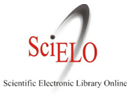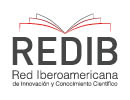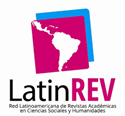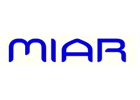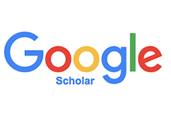CryptoPunks, accelerationism, technoscience and the overflow of capital
DOI:
https://doi.org/10.21142/DES-1502-2023-0018Keywords:
Agency, cybernetic culture, non human, accelerationism, Actor-Network TheoryAbstract
This work is an investigation on the agency of non-human entities, in particular, of technology, through the case study of the community of collectors of CryptoPunks cryptoart. This undergoes a literature review on topics such as philosophy of technics by Simondon, Actor-Network Theory, assemblage theory by DeLanda, and accelerationism, which converge operationally in a relational view of what actants can do within an assemblage, and how cultural mutations enabled by technology are functional as vectors of acceleration for the creation of contemporary subjectivities, that are put forward to immanently overflow technocapital. The study concludes with the difficulty and complexity in localizing the agency of technology if cybernetic culture and the slavery it undergoes is not taken into account.
Downloads
References
Baudrillard, J. (1994). Olvidar a Foucault. Pre-Textos.
Bauman, Z. (2002). Introducción. En La cultura como praxis (pp. 9-94). Fondo de Cultura Económica.
Berardi, F. (2007). Generación Post-Alfa: Patologías e imaginarios en el semiocapitalismo. Tinta Limón Ediciones.
Berardi, F. (2017). Fenomenología del fin. Sensibilidad y mutación conectiva. Editorial Caja Negra.
Chohan, U. W. (2021). Non-Fungible Tokens: Blockchains, Scarcity, and Value. Critical Blockchain Research Initiative, 1-13. https://dx.doi.org/10.2139/ssrn.3822743
Collins, H. M. y Yearley, S. (1992). Epistemological chicken [The French School]. En A. Pickering (ed.), Science as practice and culture (pp. 309-326). University of Chicago Press.
Corea, C. (2010). 2. Pedagogía y comunicación en la era del aburrimiento y 3. El agotamiento de la subjetividad pedagógica. En C Corea e I. Lewkowicz (eds.), Pedagogía del aburrido (pp. 41-81). Paidós.
DappRadar [Sitio web]. (2018-2022). CryptoPunks. https://dappradar.com/ethereum/collectibles/cryptopunks
DeLanda, M. (2021). Teoría de los ensamblajes y complejidad social. Tinta Limón Ediciones.
De’Rozario, N. [Sitio web]. (2003). White Magic. k-gothic.net/whitemagic.html. https://web.archive.org/web/20031009153235/http://www.k-gothic.net/whitemagic.html
Deleuze, G. (2015). Derrames. Entre el capitalismo y la esquizofrenia. Cactus.
Deleuze, G. y Guattari, F. (1985). El Anti Edipo. Editorial Paidós.
Dowling, M. (2021). Fertile LAND: Pricing non-fungible tokens. Finance Research Letters, 44, 102096. https://doi.org/10.1016/j.frl.2021.102096
Fisher, K. (2019). Once upon a Time in NFT: Blockchain, Copyright, and the Right of First Sale Doctrine. Cardozo Arts & Entertainment Law Journal, 37(3), 629-634. http://heinonline.org/HOL/Page?handle=hein.journals/caelj37&div=29
Fisher, M. (2016). «Una revolución social y psíquica de magnitud casi inconcebible»: los interrumpidos sueños aceleracionistas de la cultura popular. En A. Avanessian y M. Reis (comps.). Aceleracionismo. Estrategias para una transición hacia el postcapitalismo (pp. 153-166). Caja Negra Editores.
González, J. E. (2016). Análisis cultural hermenéutico: Aportes de la Hermenéutica analógica-icónica al Análisis cultural. Círculo Hermenéutico.
Hardt, M. y Negri, A. (2005). Imperio. Paidós Ibérica.
Hester, H. (2022). El género es una tecnología de trabajo. En Laboria Cuboniks (comp.) Nuevos vectores de Xenofeminismo (pp. 141-152). Holobionte Ediciones.
Hui, Y. (2020). Fragmentar el futuro. Ensayos sobre tecnodiversidad. Cactus.
Kugler, L. (2021). Non-fungible tokens and the future of art. Communications of the ACM, 64(9), 19-20. https://doi.org/10.1145/3474355
Land, N. (2012). Fanged Noumena. Urbanomic.
Land, N. (2018). 2. Cryptocurrency as critique. En Crypto-Current: Bitcoin & Philosophy. https://etscrivner.github.io/cryptocurrent/#_2_cryptocurrency_as_critique
Land, N. (2021). Teleoplexia. Ensayos sobre aceleracionismo y horror. Holobionte Ediciones
LarvaLabs. (2022). CryptoPunks. https://www.larvalabs.com/cryptopunks
Latour, B. (1992). Where are the missing masses? The sociology of a few mundane artifacts. En W. E. Bijker y J. Law (eds.), Shaping Technology/Building Society: Studies in sociotechnical change (pp. 225-258). MIT Press.
Latour, B. (2005). Reensamblar lo social: Una introducción a la teoría del actor-red. Manantial Ediciones.
Martín-Barbero, J. (2003). Reconfiguraciones comunicativas del saber y del narrar. En La educación desde la comunicación (pp. 79-132). Grupo Editorial Norma.
Michel, J. (2018). Filosofía y sociología hermenéutica de las instituciones. En J. E. González (ed.), Fenomenología y hermenéutica en la sociología contemporánea (pp. 339-368). Universidad Nacional de Colombia, Sede Bogotá, Facultad de Ciencias Humanas, Departamento de Sociología.
Mol, A. (2010). Actor-Network Theory: Sensitive terms and enduring tensions. Kölner Zeitschrift für Soziologie und Sozialpsychologie, 50, 253-269.
https://hdl.handle.net/11245/1.330874
Narodowski, M. (2011). No es fácil ser adulto. Asimetrías y equivalencias en las nuevas infancias y adolescencias. Revista Educación y Pedagogía, 23(60), 101-114. https://dialnet.unirioja.es/descarga/articulo/4157780.pdf
Negarestani, R. (2016). La labor de lo inhumano. En A. Avanessian y M. Reis (comps.), Aceleracionismo. Estrategias para una transición hacia el postcapitalismo (pp. 221-265). Caja Negra Editores.
Negarestani, R. (2018). Intelligence & Spirit. Urbanomic.
Negri, A. (2020). De la fábrica a la metrópolis. Cactus.
Ortiz-González, J. C. (2022). Assemblage in anonymity. Meanings of the action on NFT: CryptoPunks case study. https://doi.org/10.1590/SciELOPreprints.5333
Oudshoorn, N. (2017). Hybrid bodies and the materiality of everyday life: how people living with pacemakers and defibrillators reinvent everyday routines and intimate relations. Sociology of Health & Illness, 40(1), 171-187. https://doi.org/10.1111/1467-9566.12626
Simondon, G. (2007). El modo de existencia de los objetos técnicos. Prometeo Libros.
Simondon, G. (2015). La individuación a la luz de las nociones de forma y de información. Cactus.
Simondon, G. (2017). Sobre la técnica. Cactus.
Star, S. L. (1990). Power, technology and the phenomenology of conventions: On being allergic to onions. The Sociological Review, 38, 26-56.
https://doi.org/10.1111/j.1467-954X.1990.tb03347.x
Terranova, T. (2016). Red stack attack! Algoritmos, capital y la automatización del común. En A. Avanessian y M. Reis (comps.), Aceleracionismo. Estrategias para una transición hacia el postcapitalismo (pp. 91-110). Caja Negra Editores.
Touza, S. (2022). Aceleracionismo. En D. Parente, A. Berti y C. Celis (coords.), Glosario de filosofía de la técnica (pp. 19-23). Ediciones La Cebra.
Whitaker, A. (2019). Art and Blockchain: A primer, history, and taxonomy of Blockchain use cases in the arts. Artivate, 8(2), 21-46. https://doi.org/https://doi.org/10.34053/artivate.8.2.2
Wiener, N. (1988). Cibernética y sociedad. Editorial Sudamericana.
Zukerfeld, Mariano. (2020). Bits, plataformas y autómatas. Las tendencias del trabajo en el capitalismo informacional. Revista Latinoamericana de Antropología del Trabajo, 4(7), 1-50.
Downloads
Published
Issue
Section
License

Esta obra está bajo una licencia http://creativecommons.org/licenses/by-nc-sa/4.0/




